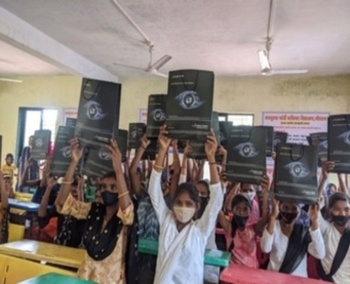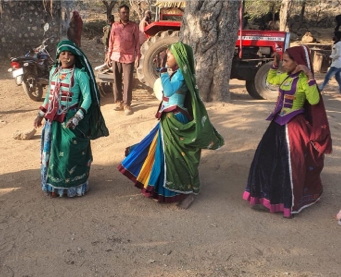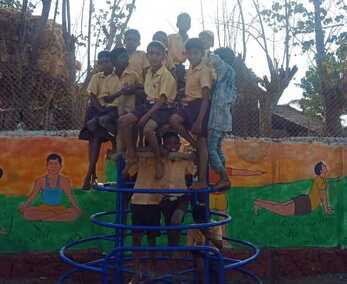Bridging the Gender Gap in Agriculture - Women as Key Contributors in Rural Economies

India is a predominantly agricultural country, and here, agriculture is more than just an economic activity; it’s a way of life, especially in rural areas. In most villages, women not only handle the household but also contribute to farming and associated activities. However, their invaluable contributions often go unrecognized, and they face numerous challenges that hinder their full potential.
Women are deeply involved in various agricultural tasks, from sowing seeds to harvesting crops. They also engage in post-harvest activities, livestock rearing, and managing household responsibilities. According to the Food and Agriculture Organization (FAO), women constitute about 33% of the agricultural labor force and 48% of self-employed farmers in India. Despite their significant involvement, women own only a small fraction of agricultural land and are often forced to bow down to the patriarchal systems of society.
The role of women in agriculture and the many tasks they perform
If anyone thought that the role of women in agriculture was limited to performing bare minimum tasks, they would have to think again, because there is so much that women actually do.
- Women contribute significantly to the labour force in Indian agriculture, performing tasks such as planting, harvesting, and weeding. In rural areas, women are often responsible for the cultivation of staple crops like rice, wheat, and pulses, contributing to food security.
- While they are key players in maintaining traditional seed banks and preserving indigenous seeds, ensuring biodiversity and sustainability, women are also responsible for handling post-harvest activities such as threshing, winnowing, and storage of crops, ensuring the quality and preservation of food.
- Women are actively involved in raising and managing livestock, particularly cattle, goats, and poultry, playing a vital role in dairy production and animal husbandry. And several women in rural areas also participate in value-added activities like milling, making pickles, processing grains, and producing traditional food products.
- It is also important to remember that women act as community educators, sharing agricultural knowledge, new farming techniques, and health practices with other women and families in rural communities.
And of course, one cannot forget that women play a crucial role in water collection, irrigation management, and maintaining water resources, especially in rural and semi-arid regions. At Project Chirag, we are more than aware of how much women have to struggle when it comes to water!


How it goes beyond just the gender gap in agriculture
Even though women play multiple roles in the agricultural sector, there is a gender gap in agriculture too – there are several problems that rural women face:
- Women in rural India often do not have ownership or control over land, despite contributing significantly to agricultural work. This lack of ownership limits their access to credit, subsidies, and decision-making power. And in case, women are working as labour on the lands of others, they are often paid less than men for the same agricultural tasks.
- Moreover, women often have to balance household duties and agricultural work, leading to a double burden of labor that limits their time and opportunities for rest or personal growth. With traditional gender roles restricting their mobility and participation in decision-making at household and community levels, limit their role in agricultural planning and innovation too.
- In many places, women farmers have less access to formal credit and financial services compared to their male counterparts, which restricts their ability to invest in better tools, seeds, or technologies. Given that they also have limited access to modern farming technology, equipment, and resources, they are unable to increase productivity and sustain long-term growth.
With limited access to agricultural education and training programs, even talented women farmers are often seen struggling in a male dominated world.


Here is how women empowerment in agriculture can become a reality
There is an urgent need to address gender disparities in agriculture and there are several ways in which the same can be done. Here are just some of the ways:
- Promote land ownership rights for women – Legal reforms and policies that allow women to inherit or own land can empower them economically and ensure their access to credit and subsidies. Ensuring joint land titles for men and women could also provide more equality in agricultural decision-making.
- Equal pay for equal work – If women are working just as hard as men, then they should be compensated equally too. There is a need to implement and enforce labor laws that guarantee equal wages for women and men performing the same agricultural tasks. ● Revisit social and cultural barriers – It is important to engage with communities to break down gender stereotypes and promote gender equality in agriculture. Community support groups and leadership programs can increase their influence in decision-making processes, empowering them along the way.
- Provide education and support – By providing women farmers training in modern farming techniques, digital tools, mobile applications and technology-driven solutions and sustainable agriculture practices, promoting agricultural education and skill development programs are all essential to encouraging women to take a role of importance in agriculture. When women are given easier access to microcredit, loans, and insurance schemes, they have opportunities to grow and contribute to the economy as well.
Empowering women in agriculture is not just a matter of equity but also of economic efficiency. Studies have shown that when women have equal access to resources, farm yields can increase significantly, leading to improved food security and economic growth. It’s essential to recognize and value the contributions of women in agriculture and work towards improving the lives of women in rural India.
A donation for rural development could work not only towards improving living conditions such as ensuring electricity and clean drinking water, but also in improving the manner in which the community moves forward!


